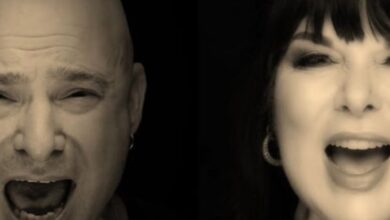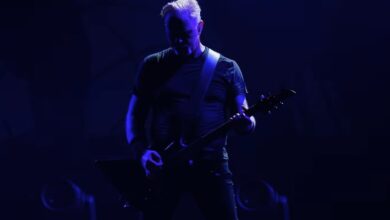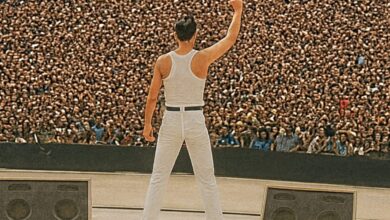Ann Wilson’s “Dream On” at Hampton Beach: A Powerful Display of Vocal Mastery and Emotion
On August 18, 2021, Ann Wilson stepped onto the Hampton Beach Casino Ballroom stage and turned the entire venue into a celebration of her lifetime in music. The hall’s close quarters allowed fans to feel deeply connected to the performance, as her voice carried through the room with clarity and power. Blending beloved Heart hits with fresh interpretations of iconic songs, she created a night that honored both her own history and rock’s wider story, each moment shaped by her unmistakable vocal command.
One of the show’s most unforgettable highlights arrived when Wilson began her interpretation of Aerosmith’s “Dream On.” It is a track that demands emotional restraint at first before unleashing full force in its soaring peaks, and very few vocalists can deliver that kind of dramatic shift convincingly. Wilson embraced the challenge with total confidence. Her delivery moved seamlessly from delicate and introspective to fierce and commanding, infusing the legendary anthem with a personal touch that resonated powerfully with listeners.
The arrangement unfolded with careful pacing. The band initially gave Wilson a wide, open space to articulate each word with softness and intimacy, feeling almost like an earnest conversation shared across the venue. As the music progressed toward the chorus, the energy began to rise, and her voice expanded with effortless strength, proving why she remains one of rock’s most admired singers. Every note seemed fully controlled, grounded in decades of experience on major stages around the world.
The performance thrived on the push and pull between intensity and calm. Guitars provided a clear structure to guide the dynamics, while piano and ambient textures filled the gaps with warmth. Gradually, drums gained presence, adding momentum that lifted the chorus into a powerful surge of sound. It created a natural emotional arc that paralleled the spirit of the song itself, giving the audience a physical connection to the moment as the arrangement grew in size and depth.
Wilson was supported by her stellar backing group, the Amazing Dawgs, who helped craft the show’s dramatic shape. Guitarist Tom Bukovac, bassist Tony Lucido, keyboardist and guitarist Paul Moak, and drummer Sean Lane displayed impeccable awareness of when to restrain their power and when to rise behind Wilson’s lead. Their intuitive musicianship allowed her to take risks vocally and experiment with subtle timing shifts that made the song feel alive and evolving onstage.
The entire evening flowed through a rich blend of Heart classics and reimagined rock staples. “Crazy on You,” “Magic Man,” “Barracuda,” and “Straight On” thrilled longtime fans, while tributes to artists such as Led Zeppelin, Queen, Steve Earle, and John Lennon broadened the musical palette. Amid this lineup, “Dream On” stood out as the emotional centerpiece—a moment that symbolized both Wilson’s admiration for rock’s legacy and her ongoing contribution to its future.
Audience members first shared shaky handheld videos online, but later that year, official footage of the Hampton Beach performance emerged, revealing a more expansive visual narrative. Multiple camera angles highlighted the energy between musicians and the excitement radiating from the crowd. The lighting design and stage blocking became part of the storytelling, showcasing nuances that were difficult to capture from a single viewpoint. The visual upgrade allowed fans everywhere to feel the intensity as if they had been in the room when it happened.
Other standout covers from that night, like “Black Dog” and “Going to California,” also drew significant attention online. These choices revealed how seamlessly Wilson could step into material associated with other legendary singers without ever sounding like an imitator. Her delivery honored the roots of each song while pulling out different emotional layers, transforming well-known melodies into intimate reflections that felt newly relevant. Her reinterpretations showed how timeless music can continue evolving through fresh artistic interpretation.
The Casino Ballroom’s acoustics contributed significantly to the emotional effect. Known for its natural warmth and clarity, the space rewarded her choice to begin the performance at a whisper, letting the song unfold patiently. When her voice finally expanded to its full power, the room carried it like a wave. Audience reactions suggested a collective moment of awe as the final soaring notes washed over them, revealing how environment and performance intertwined to create something unforgettable.
Throughout the song, Wilson demonstrated a masterful understanding of timing and phrasing. She played with cadence, drawing out certain notes or delaying entries to heighten anticipation. Slight hints of blues and soul blended seamlessly into the rock foundation, giving the familiar chorus a renewed emotional edge. For devoted fans and first-time listeners alike, these subtle choices added layers of meaning that extended far beyond a standard cover.
By that point in the tour, “Dream On” had become a recurring setlist staple, performed night after night across different cities. With each performance, Wilson refined the balance between quiet reflection and high-impact climax. The Hampton Beach rendition represented the culmination of that evolution, capturing a version polished by repetition yet fresh with spontaneous emotion. It offered a glimpse into how a song can transform even seasoned artists when revisited with curiosity and reverence.
Fans who attended the show later reflected on how authentically Wilson walked the line between honoring Aerosmith’s original and asserting her own powerful identity. Her effortless climb into the upper register drew cheers while her control over softer dynamics created moments of vulnerability. The Amazing Dawgs matched her instinct at every turn, ensuring that the arrangement never overshadowed the heart of the performance: an honest, passionate vocal storytelling experience.
Online viewers who discovered the concert through multiple angles and uploads noticed the consistency in pacing and structure each time she performed it. Gentle beginnings, steady expansion, dramatic peaks, and a clean emotional finish formed the trademark sequence. That shaping reinforced the emotional journey embedded in the song’s writing, proving that Wilson’s reinterpretation was grounded in a deep understanding of dynamic flow and narrative power within music.
Positioned between Heart’s most defining classics and tributes to the giants who shaped her influences, “Dream On” created a symbolic bridge between eras. Longtime fans recognized how seamlessly it linked Wilson’s achievements to rock’s broader tradition. Meanwhile, new listeners witnessing her power for the first time gained immediate insight into why she remains a vital force in music decades after her debut. It illuminated connections across time that only a voice like hers can reveal.
The production choices that night further elevated the moment. Instruments were spaced carefully within the mix to emphasize clarity over volume. Piano guided the emotional tone, while drums and bass provided just enough motion to lift the crescendo without overwhelming it. This sonic architecture allowed Wilson’s vocals to remain unmistakably center stage, giving every lyric and high note precise focus and impact.
That summer evening ultimately captured a defining example of what Ann Wilson continues to represent: a legend who refuses to rely on past glory alone. Through thoughtful reinvention and unwavering vocal integrity, she transformed “Dream On” into a reflection of both her legacy and rock’s enduring heart. Fans left with renewed admiration, reminded that some artists not only preserve greatness—they keep expanding it.
As new clips surfaced online in the months that followed, momentum around the performance continued to build. Critics and fans alike highlighted it as one of the standout moments of the tour, a testament to Wilson’s ongoing ability to breathe life into the songs that shaped generations. Her interpretation of “Dream On” proved that for those willing to evolve, the most powerful chapters of a career can still lie ahead, resonating long after the final note fades.





